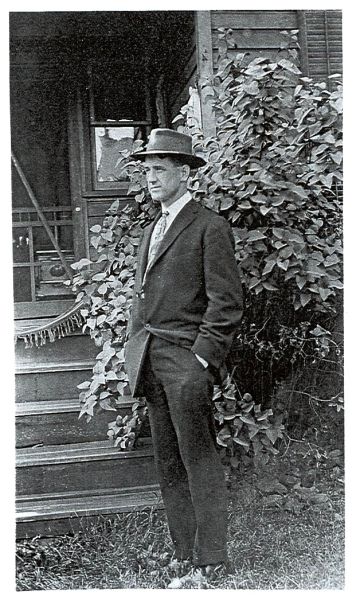Renowned impressionist landscape painter John Lawrence Lloyd was born in Coaltown, Pennsylvania, in 1884. He was the son of Charles C. and Susannah Shipton Lloyd. The area was a leading producer of coke used in the burgeoning steel industry. The family relocated to Warren, Ohio, another town known for heavy manufacturing. It was there that Lloyd would remain until his passing in 1967. His tight-knit family included three siblings. But, tragedy would visit the seemingly idyllic household when his brother, Will, died due to injuries sustained playing football, and sister, Margaret, succumbed to tuberculosis at a young age.
 Lloyd and exhibited artistic abilities early in life and went on to study at the Cleveland School of Art where he received a degree in decorative design. After graduation, he continued to hone his talents through extensive educational travels to art colonies and schools, which he attended well into the 1930's. In 1915 and 1919, Lloyd attended summer painting classes in Woodstock, New York, through the Art Students League. It was there that Lloyd met League President John F. Carlson who greatly influenced the artist's impressionistic brush strokes and strong composition. Lloyd also frequently visited artist colonies in scenic Chester Springs, Pennsylvania. He attended an eight-week session there in 1922 through the Pennsylvania Academy of Fine Arts.
Lloyd and exhibited artistic abilities early in life and went on to study at the Cleveland School of Art where he received a degree in decorative design. After graduation, he continued to hone his talents through extensive educational travels to art colonies and schools, which he attended well into the 1930's. In 1915 and 1919, Lloyd attended summer painting classes in Woodstock, New York, through the Art Students League. It was there that Lloyd met League President John F. Carlson who greatly influenced the artist's impressionistic brush strokes and strong composition. Lloyd also frequently visited artist colonies in scenic Chester Springs, Pennsylvania. He attended an eight-week session there in 1922 through the Pennsylvania Academy of Fine Arts.
Sometime after graduation, Lloyd became employed as a meter reader for Ohio Edison Electric Company, a job that he would hold until his retirement in 1954 at age 70. Even though he was employed full time outside of the world of art, he continued to travel. He also exhibited his work, and became a painting instructor.
Lloyd was associated with The Butler Institute of American Art for many years. His work was frequently exhibited at The Butler, where he also taught painting classes. The institution awarded Lloyd its Gillespie and Gage prizes for his work. Other prestigious exhibition venues for Lloyd's paintings included the Philadelphia Museum of Art, the Columbus Museum of Art, and the Art Club of Philadelphia.
Lloyd's artistic career coincides with major trends in American history. His most productive painting years occurred when American realism was at its pinnacle, but European Impressionism and Post Impressionism were still major inspirations concerning art education. Lloyd's beautifully composed landscapes combine the prevailing moments of his time. His focus on light and color harkens to the plein air traditions of Europe, while his sense of place, narrative, and procedure remained prototypically early 20th Century American in sensibility. Lloyd, skilled at demonstrating seasonal changes to rural landscapes, portrays sublime pastoral visions. These scenes, heavy on the nostalgia of simpler days, have a universal appeal. In contrast, Lloyd also created industrial panoramas, where nature plays a secondary role as it is choked up by smoke, great hues, shadows, and the fiery belches of steel-producing furnaces. And somewhere in the middle, Lloyd created scenes of meeting places, like railroad stations, Where the country literally met the industrial city.
Lloyd is primarily known for his landscape paintings and oil, but he was also accomplished in watercolor in pastels and produce numerous quality works in portraiture and still life.
Lloyd died in 1967 at the age of 82. Dr. Louis A. Zona, director of The Butler Institute of American Art, once said of the artist, "To examine the nuances of his paintings is to be reminded that the art that remains timeless is that which is substantive aesthetically."
Compliments of the Hoyt Institute of Fine Art, New Castle, Pennsylvania.
